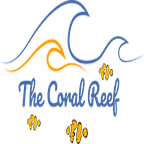All about Anemones

Sea anemones are a soft-bodied, mostly sedentary marine animals resembling flowers. (They are named after a terrestrial flower.) They are ubiquitous found in virtually all the seas, at all depths from tidal zones to more than 33,000 feet, and conditions from tropical waters to Antarctic waters below semi-permanent ice shelfs.
The sea anemones belong to the order of the invertebrates (class Anthozoa, phylum Cnidaria).
There about 1,000 species of sea anemones, and they vary in size from a few less than an inch to diameters up to six feet.
The sea anemone is perhaps bests known for its symbiotic relationship with certain fish and crabs, which give them a prominent place in marine aquariums and culture. The most famous being the clown fish, widely popular as Nemo in the Disney movie “Finding Nemo”.
The anemone is typically separated into two parts, the oral disc on top and the column below. The mouth and tentacles are on top above the oral disc, while the foot and pedal disc, the base, is the main structure of the column.
Anemones, which are Actinarians, exhibit great variety in shape and habit. The cylindrical body may be thick and short or long and slender. The oral disk, containing the mouth, at the upper end of the body is surrounded by petal-like tentacles, which are often present in multiples of six.
Sea anemones are commonly yellow, green, or blue; they are typically attached by the pedal disk, or base, to a hard surface such as a rock, wharf timber, a seashell, or the back of a crab. Most seldom move; some occasionally creep very slowly or move in a slow somersaulting fashion.
Sea anemones have no solid skeleton but may secrete a horny covering. Some species have adhesive-secreting structures and cover themselves with grains of sand, bits of shell, or other foreign objects.
Nematocysts, microscopic stinging structures in the tentacles, are used to capture and paralyze prey such as fishes and other marine animals. Some species eat only microorganisms. Anemones are eaten by sea slugs, certain starfishes, eels, flounders, and codfish.
In most species the sexes are separate. Sperm and eggs are usually discharged into the water, where fertilization occurs. Sometimes, as in Halcampa and Actinia, sperm are drawn into the female’s gastrovascular cavity, in which the eggs are fertilized. Fertilized eggs develop, for example, into ciliated larvae that disperse to new areas before metamorphosing into adults. Reproduction sometimes occurs asexually by longitudinal fission (e.g., in Anemonia); that is, the animal splits lengthwise into two equal individuals. In some species (e.g., Metridium) the pedal disk breaks into fragments that grow into new individuals.

